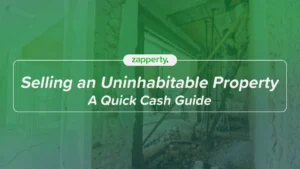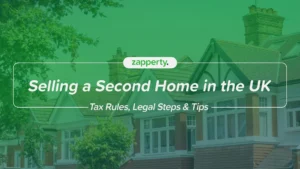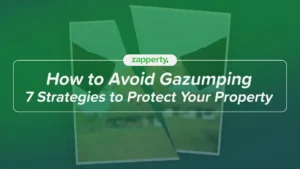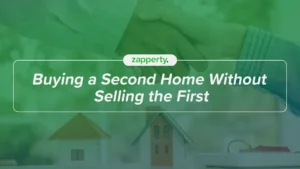Shared ownership properties have exploded in popularity over the last decade or so. As more and more people struggle to get on the property ladder, they can represent an excellent way to make the first step.
While the buyer takes between 10% and 75% of the equity, the builder or housing association retains the rest, charging rent on their portion. Over time, the buyer can ‘staircase’ up, buying more equity as they go and at the current market rate.
However, what happens when it comes to selling shared ownership properties? Are they harder to sell? Are there any special requirements? What’s the shared ownership process?
Well, keep reading to find out. This blog explores the process behind shared ownership resale, and what to do if you can’t sell your shared ownership property.
Key Takeaways
- Shared ownership properties can be a great way for people to get on the property ladder.
- By purchasing a percentage, owners can staircase up and eventually own their home.
- Although accessible, shared ownership can have drawbacks, such as a higher overall cost and various obligations.
- Selling a shared ownership property can be challenging, but is largely the same as with any other home.
What is a shared ownership property?
As we’ve discussed, shared ownership properties are when the buyer only takes on a portion of the ownership, generally anywhere between 10% and 75%. The building owner or housing authority retains the rest, and charges rent on it. In England in 2024, roughly 200,000 households were living in shared ownership homes, around 1% of the total.
The process of buying a shared ownership property is no different from any other. The buyer saves a deposit and gets a mortgage in the usual way. However, over time they will have the opportunity to buy more of the equity, known as ‘staircasing’. Depending on their agreement, they may be able to buy 100% eventually.
What are the pros of shared ownership?
The biggest advantage of buying via a shared ownership scheme is that it makes the property much more affordable and gives buyers a chance to get on the property ladder. Rather than paying rent solely to a landlord, they are gaining equity in an asset.
The smaller deposit, and therefore smaller mortgage, opens them up to a wider pool of potential buyers. What’s more, shared ownership properties are often in new developments and can come with all the advantages of a new property, such as high-speed internet, community spaces and prime locations. Finally, some housing associations may also incentivise buyers with deals such as payment holidays, full or partial furnishings or free legal fees.
What are the cons of shared ownership?
The major drawback of shared ownership is the higher overall cost. While it’s easier to get on the ladder, owners need to pay both their mortgage and the market rent on the other share. On top of this, many buildings will have ground rent or service charges as well.
Secondly, you may still need permission to make any changes to the property other than cosmetic ones, and many owners are still responsible for upkeep and repair costs.
Thirdly, it can be expensive to staircase up. Because both shares of the property appreciate at the same rate, the remaining portion will be worth more than it would have been had you just bought 100%. Finally, selling a shared ownership property can be more complex than if you were to own it outright.
The Process of Selling a Shared Ownership Property
If you want to sell a shared ownership property, the first step is to check your lease, as it will contain the rules you need to follow. However, you’ll need to contact the landlord or housing association in writing to notify them you want to sell, as they get first refusal.
They will inform you of the length of the Nomination Period (usually 4-8 weeks) in which they can either find a buyer themselves or buy your share from you, they will also communicate any charges required as per the lease.
A chartered surveyor will be used to determine the market value of the property, which will be used to set the asking price. You’ll also need to get an EPC certificate at this point and the sale can’t go ahead without it.
With all of this in place, your landlord will try to find a buyer during the Nomination Period. If they do so (or choose to buy it themselves), they will undertake the relevant checks on their proposed buyer and prepare the paperwork. Once all is agreed, both sides instruct their solicitors to start the conveyancing process.
If the landlord fails to find a buyer, they may offer you the chance to buy the rest at the market price. If you choose this option the sale continues as normal. If you don’t want to buy it yourself, you can find your own buyer after the Nomination Period.
However, this can come with its own set of challenges.
Challenges in Selling Shared Ownership Properties
Shared ownership homes have received a lot of bad press over the years, with stories of people being trapped in unsellable homes and crippled by high service charges. Consequently, many buyers may avoid them outright, or at least be very wary.
Secondly, any buyer you find will have to go through the same vetting process as you by the housing association. Not only can this slow the process but can also reduce the pool of potential purchasers. However, if they pass the checks then the sale can proceed as normal.
I can’t sell my shared ownership property
If you’re struggling to find a buyer, there are still a few options. The most likely to lead to a resolution will be to negotiate a lower price with your housing association, although you may lose money.
You could also explore subletting opportunities, should your lease allow it. However, you will still be eligible for charges and will have to meet your obligations as a landlord.
If all else fails, you can explore options to sell to a cash buyer – as long as your lease allows. Selling a shared ownership property doesn’t have to be complex, but it’s important to understand the process and your obligations to make sure you don’t get stuck or lose money. For more information, contact us today.





